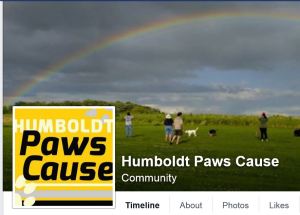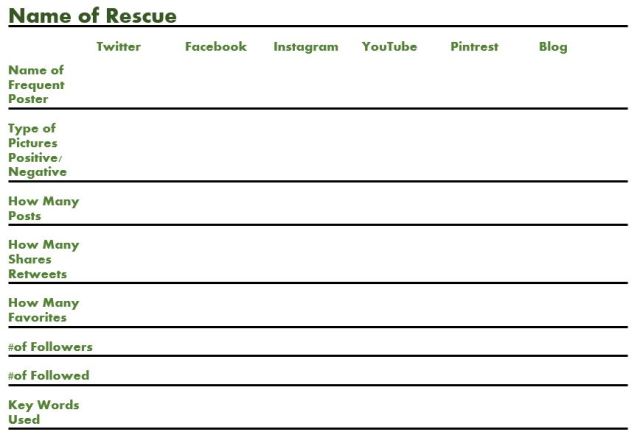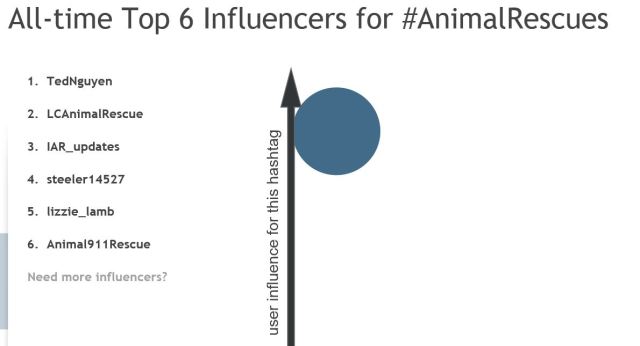Many animal rescues use Facebook, but do they have a strategy when they do? Or do they just post their current animals and fundraisers?
Believe or not the most successful animal rescue groups have a strategy to get the most out of their Social Media platform.
Let’s examine a how an animal rescue can build a great social media strategy.
First part of an effective strategy is having a specific reason for being. Many pet rescues are breed specific, like border collie rescues, or golden retriever rescues, but there are other social media platforms to build an animal rescue around.  For example, Humbolt Paws Cause out of Humbolt County California has a very successful lost pet Facebook following. Humbolt Paws Cause is built on providing a service, a very distinct service and they do not deviate from it. When the community finds or loses a pet, they know where to go.
For example, Humbolt Paws Cause out of Humbolt County California has a very successful lost pet Facebook following. Humbolt Paws Cause is built on providing a service, a very distinct service and they do not deviate from it. When the community finds or loses a pet, they know where to go.
Another platform for a social media strategy is age.  Many groups only rescue senior animals. This allows people who are looking only for older dogs to the right sites
Many groups only rescue senior animals. This allows people who are looking only for older dogs to the right sites
And supporting a cause, like animal testing is yet another platform. Maybe owning another animal is not in future for some people. However supporting causes can be.
Maybe owning another animal is not in future for some people. However supporting causes can be.
These platforms set the stage for the second part of the strategy, defining the target market of the audience.
Just what does that do?
Looking at how the target audience talks about stuff and what keywords interests them is important. If you use the keywords online and present information that interests them, you come up in their search when they search for animals. Here are 2 resources that can help you with targeting and keywords. Using Google AdWords for Blogging and Nielsen’s lifestyle segmentation systems.
The third part of the strategy is the hardest for animal rescues, finding Influencers and Competition. While the competition part is easy, every rescue is a competitor, just how do you know who influences the decisions of the people within group? Is there a strategy behind this part of the strategy? Yes!!
For big public causes there can be complicated systems for this. Check out this article: 10 Steps to Finding the Influencers in Your Market.
But let’s face it, if you are a local rescue, you are looking for local people making local decisions. This can be achieved by using the Facebook search tool featured in the following articles. 17 Ways Marketers Can Leverage Facebook Graph Search and How to Use Facebook Graph Search to Improve Your Marketing
The goal is to search by geographical location. Once animal rescue competitors have been found (and my guess is you already know who they are), you examine who is posting on their pages. Look then look for common posters. These can be your influencers. The influencers can also be the people who are always donating to several rescues, or organizing community events.
Regardless of how you find your influencers, you analyze how they use social media. Do they tweet? How many times a day? Do they only use Facebook? What types of posts to they respond to? Do they have a blog? What is on Instagram?
You get the idea.
This brings us to the fourth part of the strategy, aligning your strategy with the influencer’s strategy.
Your goal should be to build a Social Media Marketing Strategy that resembles what the influencer(s) is/are doing. Right down to the time of day and place that they do their posting …
Why???
Because they are successful in shaping the opinion of who is getting funding and getting animals adopted.
Now that you have the strategy basics in hand it is time to get started building. Whether you are rebuilding your strategy or creating a strategy from scratch, take some advice from the Humane Society. They have done some great research on the best Social Media Strategies in their article Putting Your Best Facebook Forward Here is a recap:
Keep Everything Positive – Every animal needs the most positive representation as possible. Make sure you have happy pictures showing how the animal interacts with their environment.
Current Information Is Important – As the animal progresses in the rescue home, they need more current pictures. Tell how their days are progressing, have they taken a walk or played with a house mate?
Catch More Flies With Honey – Do not post the “urgent” “on death row” or “ _ days to live” because hysterical posts attract hysterical people. There are people who cannot say no, who end up ultimately hoarding animals. These types of posts get a “following” and it turns off true family adopters.
Simple and Sweet — Post important information that allows the pet to be tracked through multiple shares. Don’t neglect that picture—images are more likely to get shared.





















